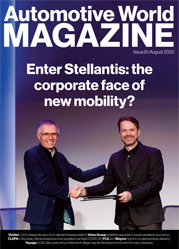
Datwyler advances elastomers technology for electric vehicles
European Rubber Journal reports how Datwyler is increasing its focus on elastomers technology for electric vehicles (EVs) to support OEMs and other players in developing e-powertrains.

European Rubber Journal reports how Datwyler is increasing its focus on elastomers technology for electric vehicles (EVs) to support OEMs and other players in developing e-powertrains.

In this technical article, Datwyler expert Jakub Kadlcak explains how thermal management of battery electric vehicles can be improved by the intelligent use of the right materials and composites.

European Rubber Journal describes how Datwyler is contributing to advances in the car of the future with its patented stacked electroactive polymers.
Datwyler is strengthening its position with the innovative future technology of electroactive polymers and has secured this with corresponding patents.
A deeper look at the trend towards electrification and the possibilities surrounding haptic feedback. Haptic feedback is an example of these advances and is an area that is increasingly important in terms of vehicle design, both in terms of aesthetics and functionality.
Andreas Minatti, Dr. Norbert Haberland and Sven Gisler, all at Datwyler, explore the increasing use of integrated electronics in the mobility sector and explain how sensor technology can improve predictive analytics.
Datwyler shows how Electro Active Polymers (EAP) can be used for various customized haptic feedback technology solutions in today’s car interior designs.
As the mobility sector continues to evolve towards increasingly intelligent vehicles, Datwyler offers two solutions for the automotive industry in the field of electroactive polymers (EAPs) and integrated electronics.

Engaging with expert component suppliers can provide a competitive edge as players scramble to prepare for electrification, writes Datwyler's Andreas Minatti.

Embedding RFID tags in elastomer components enables 100% traceability and assignment.